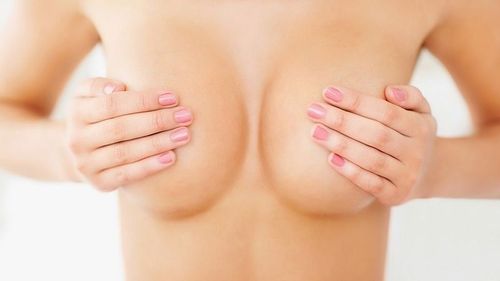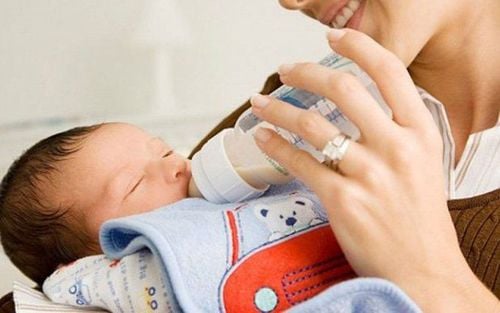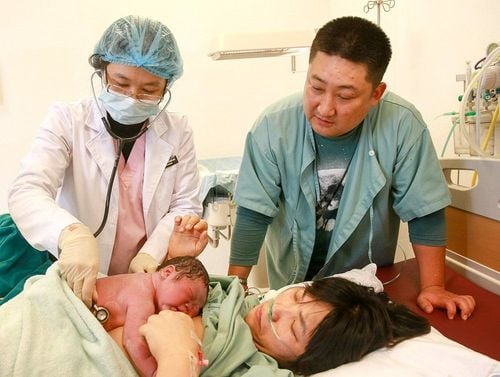This is an automatically translated article.
The article was consulted with Specialist Doctor of Pediatrics - Neonatology - Department of Pediatrics - Neonatology - Vinmec Hai Phong International General Hospital.
When deciding to introduce bottle-feeding, mothers need to choose the most suitable nipple for the baby. When you find the right pacifier, you can choose the type of bottle and other accessories that come with it.
1. Choose the right nipple
When shopping for baby supplies, you don't need to spend a lot of money. The cost of these accessories adds up quickly. So just buy a few basic items at first.
Careful cleaning of bottles and nipples and safely using formula are the best things you can do for your baby to ensure hygienic formula feeding. When choosing the right pacifier for your baby, there are a few things to keep in mind:
Material: you can choose silicone or latex nipples. The silicone nipple is firmer and holds its shape longer. Rubber nipples are more flexible but do not last as long. In rare cases, an infant may be allergic to latex. Shape: you can choose from a traditional, orthodontic, flat tip, or a slotted and shaped nipple. Orthodontic pacifiers are designed to fit a child's palate and gums. Flat nipples are shaped like a mother's nipple. Age, size and flow: nipples often come in different sizes and flow rates for babies at different stages of development. If you're bottle-feeding an infant, buy the smallest size, and then determine which nipple your baby likes. There are special types of nipples, made for premature babies or babies with mouth problems that affect their ability to suckle. These special nipples can help control or measure the flow rate. Monitor to make sure the baby is not having trouble feeding. Or the milk flows too much, causing the baby to choke or choke. When choosing a pacifier, the mother should pay attention to the change to suit each stage of the child's age. Normally, every 2 to 3 months on average, you need to change the pacifier for your baby, in addition, it depends on the type of product, the frequency of use as well as the quality of the product and the hygiene and preservation of the baby. mom.
You need to pay attention to change the pacifier in case you try to pour milk out of the teat. If it is red in one line, the hole is too big, it should be replaced with a new one. Regularly inspect the teat before each use for wear, discoloration, or thinning.
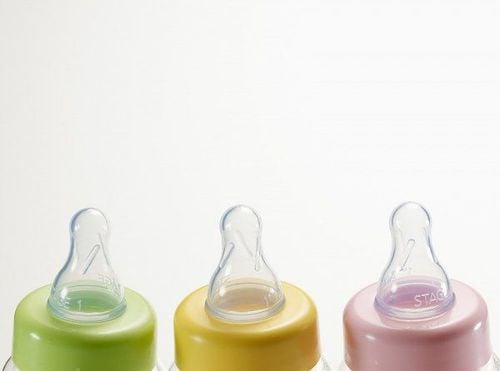
Some signs that the mother needs to change the nipple:
The nipple is stuck and no milk: Through the nipple color monitoring test, the mother can check the quality of the nipple. When you see a baby sucking milk, the nipple is flattened so that the milk does not flow with signs such as the bottle is pale, the nipple is swollen, the rubber part is soft.... then the mother needs to know that this nipple cannot be used anymore irregular flow: Instead of milk flowing in a drip pattern, milk will flow in a stream, which means that the nipple is problematic because then the nipple is too big for normal, this easily causes the baby to choke . When it is necessary to increase the size of the nipple: How often to change the nipple and bottle depends on the development of the baby. The more the baby eats at each feed, the stronger the suckling power as the baby gets older. Therefore, the mother needs to monitor the child's feeding needs to change the nipple to a larger size, a larger bottle to suit the needs of the child.
2. Choose a baby bottle
There are many different models on the market today. Bottles that prevent air from entering, baby bottles that are easy to hold, and many disposable bottles.
Bottle material
You can choose plastic, glass, stainless steel bottles or a combination model that has a glass bottle inside a plastic or silicone tube If using plastic bottles, you need to replace them regularly Baby bottles Glass is not needed, as long as they are not broken, chipped or cracked. The downside is that they are heavier and can be harder for babies to hold (once they're ready to hold the bottle on their own). In addition, glass bottles can be dangerous if broken. Bottles are made of stainless steel that do not contain plastic and are lighter than glass bottles Age and size of bottles
For babies, buy small bottles than. And switch to a larger bottle when your baby is about 4 months old.
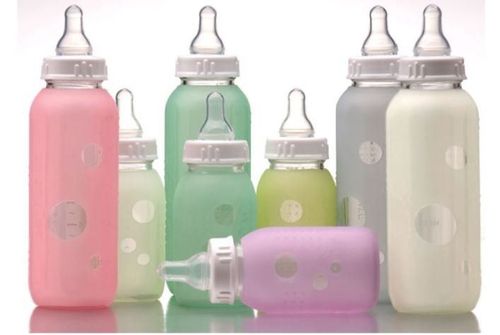
To choose safe baby bottles, mothers should note:
Use glass bottles or bottles made from stainless steel The American Academy of Pediatrics (AAP) recommends that parents avoid using chemicals Plastics have recycling codes 3 (phthalates), 6 (styrene) and 7 (bisphenol). Unless labeled as eco-friendly, biologically produced products Do not heat bottles in a microwave, boiled water, or dishwasher, or any other appliance. Use heat as high heat can release chemicals found in the plastic. For safe cleaning, use a non-abrasive brush or sponge. Scrub with warm, soapy water and rinse. Or use a glass or stainless steel bottle that is dishwasher safe. Do not store formula in plastic bottles. Throw away excess formula. Do not use very hot water to prepare formula To warm formula, place the bottle in a bowl of warm water or run under warm running water.
Buy the smallest pacifier available on the market if your baby is bottle-fed. You should choose the type of pacifier that is most suitable for your baby to use. It's important to find the right pacifier for your baby's age if you're just weaning your baby from breast milk and switching to a bottle.
First, although you can use the pacifier that comes with the bottle in the infant bottle set, it's best to find one that your baby really enjoys. You can buy that type of pacifier in bulk once you know your baby's preferences.
Please dial HOTLINE for more information or register for an appointment HERE. Download MyVinmec app to make appointments faster and to manage your bookings easily.
Article referenced source: babycenter.com







